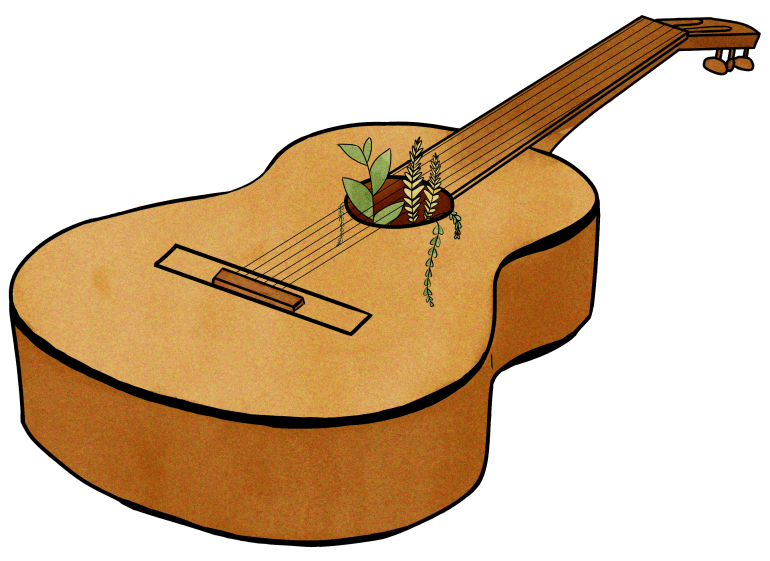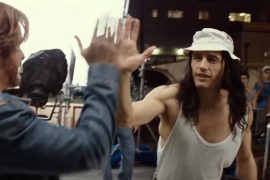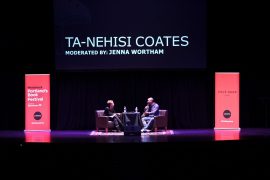Justin Boot–or as he likes to be called, Boot–trailed his way from the dense black spruce forest of rural Alaska in early January 2023 on his Northwest Tour where he played his honky tonk music from Port Townsend, Washington to Portland, Oregon. But Boot isn’t just a musician. He is the host of the bi-annual Trapper Creek Bluegrass Festival (TCBG) that he hosts on his 80 acre property in Trapper Creek, Alaska (population 499)–where he has old school buses, tree houses, teepees and even sailboats converted into living spaces and is one of the founding members of The Subarctic Collective along with Kane Stanton, permaculturist Josh Smith who runs the nonprofit Regenerative Renaissance, and Chelsea and Matthew Dishner who have a farming project under the Alaska State Fair nonprofit.
When Boot took the stage of Laurelthirst Pub in Portland, he enamored the crowd with his towering stature, cowboy hat, rowdy guitar picking, and jokes that were dusted with a hint of outdated humor. Boot played his set to a lively crowd who danced to his tunes and laughed at his obscure jokes–capturing the undivided attention of the bar patrons. He seems to do just that, no matter where he goes.
Boot has a long history of connecting with the earth and building community in sustainable and nourishing ways. He spent a lot of time in the Alaskan villages from ages 15-20 where he immersed himself in Alaskan Native culture, eating Muktuk, a traditional Inuit and Chukchi meal of frozen whale skin and blubber– and Akutaq, a sweet Inuit treat made from fish/animal fat or seal oil, with berries and Crisco. He also learned how to set net for salmon, herd reindeer, and hunt. It’s during this time he saw the Yukon Fiddlers who played Athabascan Fiddle music. This was integrated into the Athabascan culture in the mid-1800’s, when trappers and miners from the Hudson Bay co. traveled the Yukon river and taught the Athabascan Native people–that they met along the way–dance routines and the fiddle. This eventually evolved into the fiddle style named Athabascan Fiddle. All of this to lay the foundation in which the way Boot would live his life; sustainably and environmentally responsible while living off his art form.
His newest endeavor is taking on the cultivation of a nonprofit organization titled, The Subarctic Collective. The collective is in its early stages of its cultivation, but aims to teach people across Alaska sustainable and environmentally conscious practices that could greatly benefit these communities, especially the rural ones. Their intention is to bring workshops all over the state and teach folks about:
Carbon Credits
Big corporations that impose harm into the environment by putting ungodly amounts of carbon into the atmosphere will pay people for growing crops that take carbon out of the atmosphere. Boot, an advocate for hemp farming said, “this is one of the only ways to make money on hemp in Alaska.” This additional income could be a huge relief for many rural community members that grow hemp, barley, and other agricultural products.
Energy Efficient Structures
A few years ago Boot started branching out from converting old vehicles (of land and water) into living spaces to building energy efficient structures. The Subarctic Collective’s goal is to bring folks out to his property and learn how to build things such as thermal batteries; a storage unit that utilizes solar heat and stores it in a way that releases the heat slowly into the home. They will also be teaching folks how to build earthship-like structures. These structures operate on solar energy, renewable energy, natural and repurposed materials, water conservation, and food production. You can find entire communities of these earthship structures on the outskirts of Taos, New Mexico.
Sustainable Agriculture
The way that agriculture is done today is highly unsustainable. Soil is not made to host one kind of a crop over and over. It also can not replenish its nutrients without proper turning. The Collective aims to teach sustainable agriculture practices such as turning over crops with livestock.
Communities
When I asked Boot in our interview, “so, who exactly will the Collective serve? The villages in the Alaskan bush?” He answered, “everyone.”
The Subarctic Collective will serve anyone who is open to learning in the state of Alaska. Eventually, they would like to have paid internships for underprivileged youth that will be hosted on his property where they can have hands-on experience and learn skills that will aid in a lifetime of sustainability and get the opportunity to create art in their work.
The Subarctic Collective is a perfect example of people coming together and building a better future for both the environment and their community. It’s also an exceptional model of how we can take the current climate crisis into our own hands and make a difference.
To find Justin Boots music, go to www.reverbnation.com/thegoddamnranchhandband and if you have any questions about the Subarctic Collective or want to get involved, you can email subarcticcollective@gmail.com.





